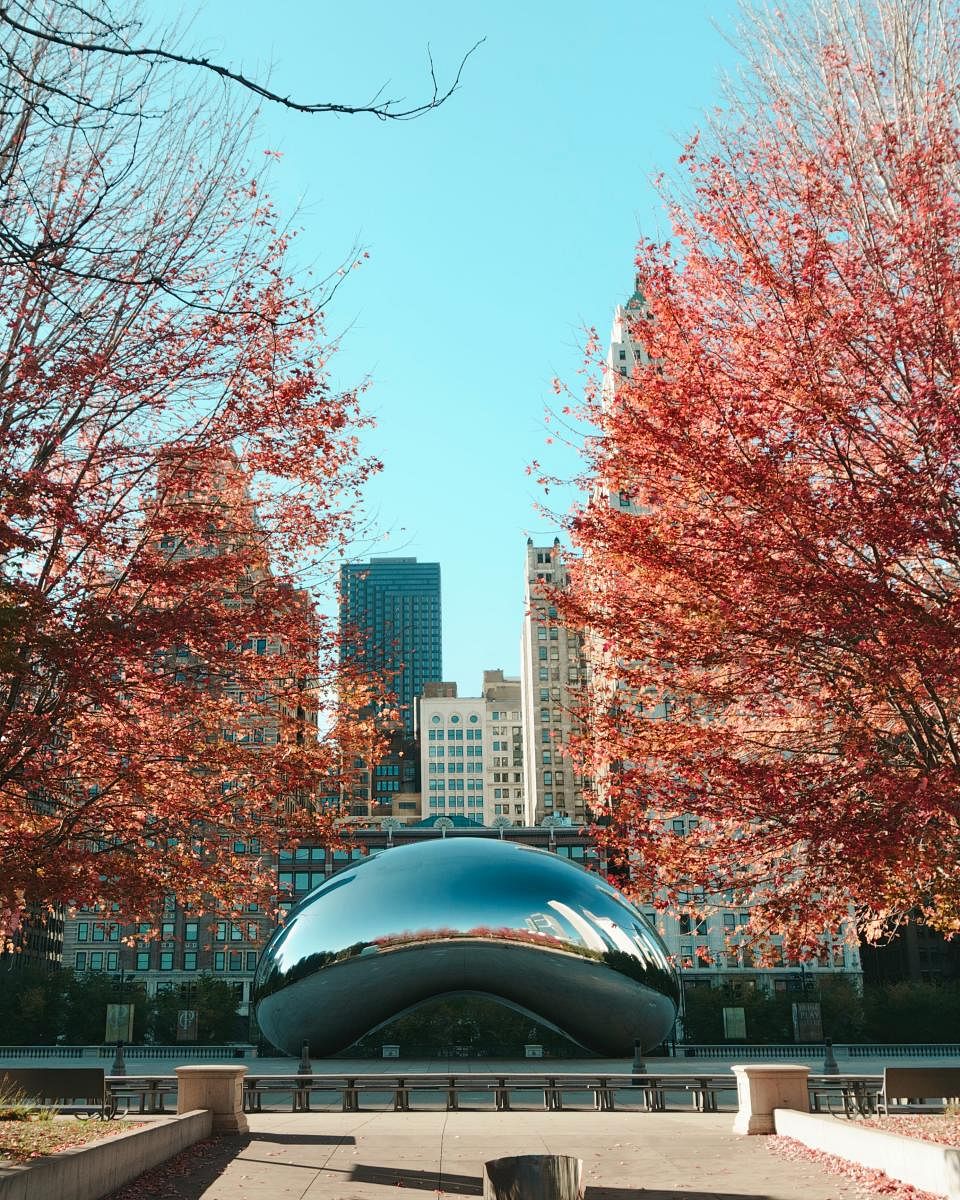

Considering the pandemic, curtains may be down on travelling but perhaps now is also the best time for local tourism boards to reinvent their destinations. Thankfully, some pockets of the world do boast of a few examples where mere wastelands have been turned into an oasis of creativity.
All credits to innovative ideas for their renaissance. Let’s comb through some of them, which hopefully may fuel motivation for many more similar examples in the time to come. Here’s wishing the world a speedy recovery!
CHICAGO, USA
MILLENNIUM PARK
Once a junkyard of the Illinois Central Railroad with a shabby parking lot, it reopened as an intriguing public park in July of 2004. It was in 1997 that the then Mayor of Chicago Richard M Daley had suggested this idea. Roping in the best brains through competitions, they gave birth to unique attractions — the most significant being the grand Cloud Gate sculpture, designed by Indian–British sculptor Anish Kapoor. Nicknamed the Bean, because of its shape, it’s made up of 168 stainless steel plates welded together that offer a stunning reflection of the windy city’s skyline. The design, having scooped inspiration from liquid mercury, soon became an icon of Chicago, often used by airlines for commercials and it continues to feature in movies. The two 50 feet tall fountain glass towers facing each other are equally astounding. The brainchild of Spanish artist Jaume Plensa, they project video images of locals while the fountain is in action, and amusingly it seems the water is being pumped out of their mouths. By the way, the park boasts a spectacular location — skyscrapers on one side and a lakeshore on the other side.
AMSTERDAM, HOLLAND
NDSM WHARF ALONG IJ RIVER
NDSM, once the largest Dutch shipbuilding name in the world, encountered bankruptcy in the 1980s and ever since its shipyard here, roughly covering the size of several football grounds, stood ignored. But in 2000, following a study with local artists by the authorities, it blossomed into one of the most lively pockets of Amsterdam. After all, it presented a platform for artists to showcase their art through their studios and exhibitions in the many warehouses. They even made abandoned boats, trams and buses beguiling for the eyes. Soon, it got sprinkled with restaurants, quaint cafés, bars, hotels and every year remains a favourite hot spot for several festivals and concerts. During weekends, it brims with traditional markets.
MEXICO CITY, MEXICO
PLANE LIBRARY
Early this January, the local government, under its plan of coming up with something exceptional in one of its most overlooked neighbourhoods, brought an old Boeing 737-200 aircraft and turned it into a library. Seats were removed for desks and overhead bins for placing books. The site for it was chosen in a park in its Iztapalapa neighbourhood, which was always seen overgrown with weeds and was a hangout spot for criminals and drug addicts but with the opening of this winged library, it’s hard to believe if it was the same messy park. Named as ‘Volando a la Utopia’ (Flying to Utopia), it became an instant hit which is also planted with 26 internet-connected computers, a play zone and even a flight simulator.
KOLKATA, INDIA
ECO PARK
The largest urban park of India in the New Town region, it is spread over nearly 500 acres but until 2011, there was nothing more than a large water body here, usually peppered around with wild plants.
However, in July of the same year, the Chief Minister of West Bengal Mamata Banerjee announced the creation of a public park around it. The name suggests several examples of sustainability unfold here, the most important being the use of solar energy across the park. Its fountain shows with light and sound are a must for all, and the same goes for its gardens, especially the gardens on butterflies, sculptures, and even on Japanese traditions.
Equally fascinating is its ‘seven wonders of the world’ precinct. One can also rent a bike for an enriching cycling experience, or go boating.
NEW YORK CITY, USA
THE HIGH LINE
This was an elevated rail route, cutting through busy Manhattan on which freight trains ran but suspension of this route since the early 80s had made it deserted. It began looking so disorderly that in 1999, plans were almost weaved to demolish it. Luckily, very soon an NGO named ‘Friends of the High Line’ was born, comprising of local citizens who raised their voice to use it for something resourceful. With their ideas and an overwhelming response to a competition in 2004 that came from over 30 countries, along with the support of donations, experts and the NYC government, it got shaped for recreation in various hues ranging from cycling and jogging tracks to gardens and even spaces for art exhibitions. From time to time, many new portions of it keep opening up since its first inauguration in 2009.
CHRISTCHURCH,
NEW ZEALAND
CARDBOARD CATHEDRAL
In the devastating earthquake on 22 February 2011, 185 people died in Christchurch and it also caused the destruction of buildings including churches. By August 2013, however, came up a Cardboard Cathedral, replacing Christchurch Cathedral which got highly damaged. Built at the site of St John Baptist Church in Latimer Square that also came down during the same calamity, it’s one of New Zealand’s most visited churches. As its name suggests, it’s made mainly of cardboard, along with local wood, timber and steel — with a strong polycarbonate roof. Designed to last for at least 50 years by Japanese artist Shigeru Ban (who was invited to Christchurch), it cost a staggering NZ$ 5 million despite its simplicity and is big enough to seat nearly 700 worshippers.